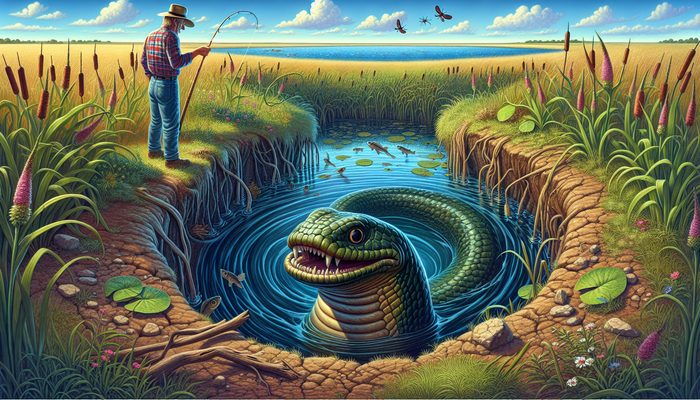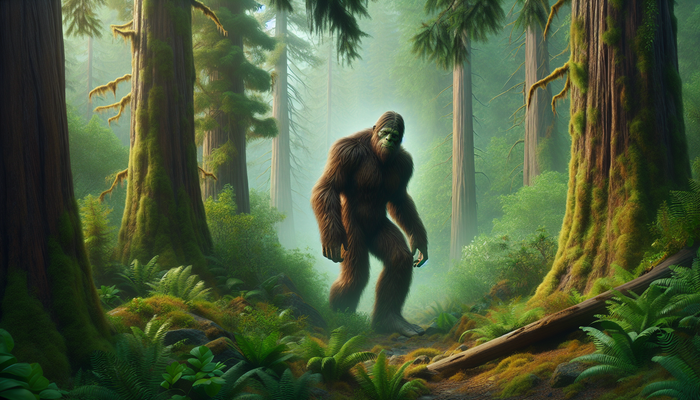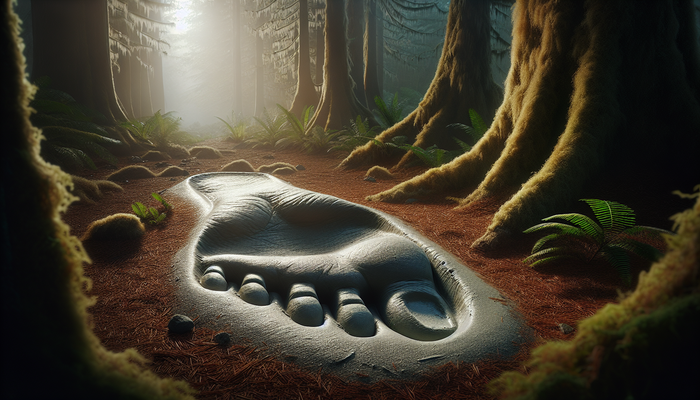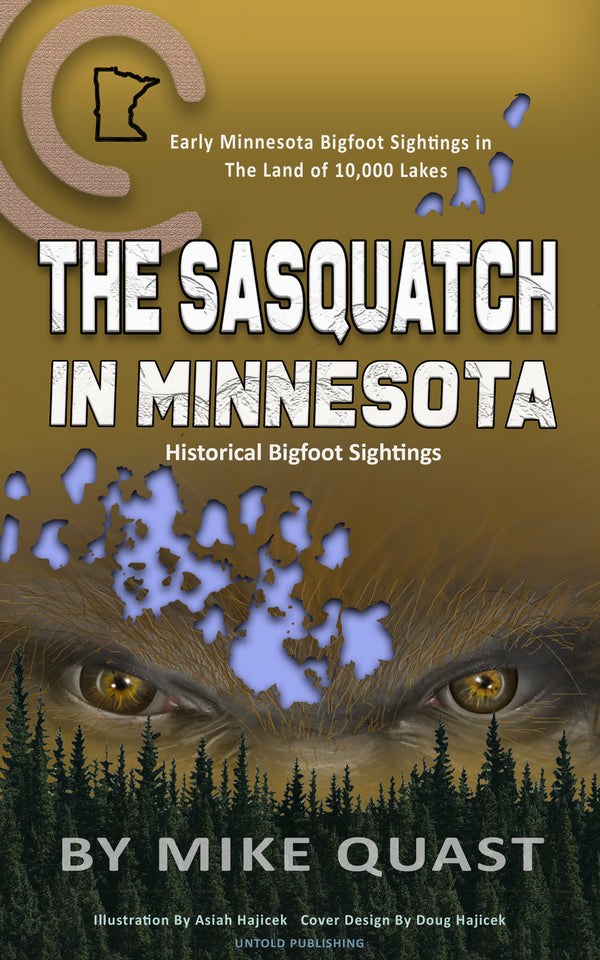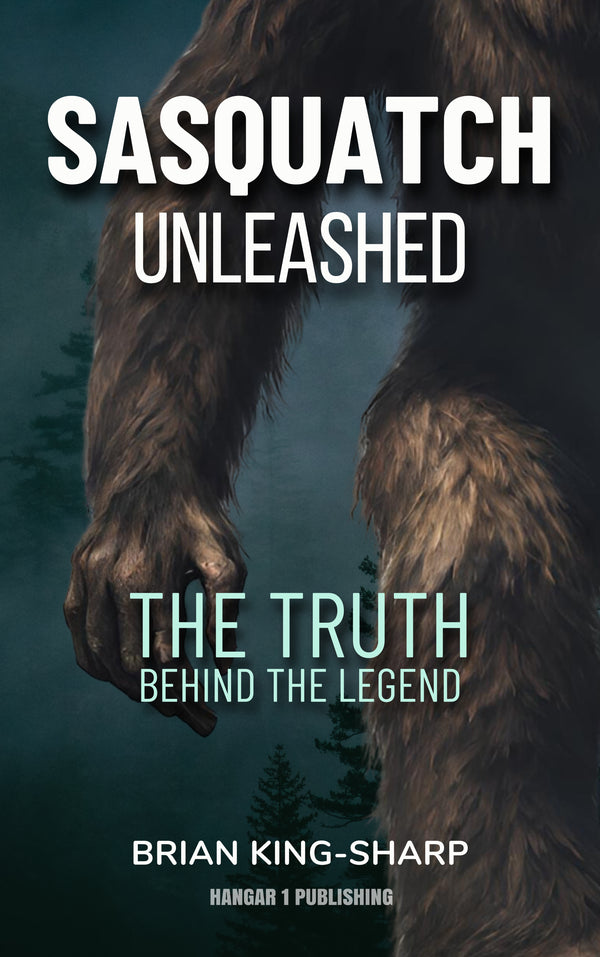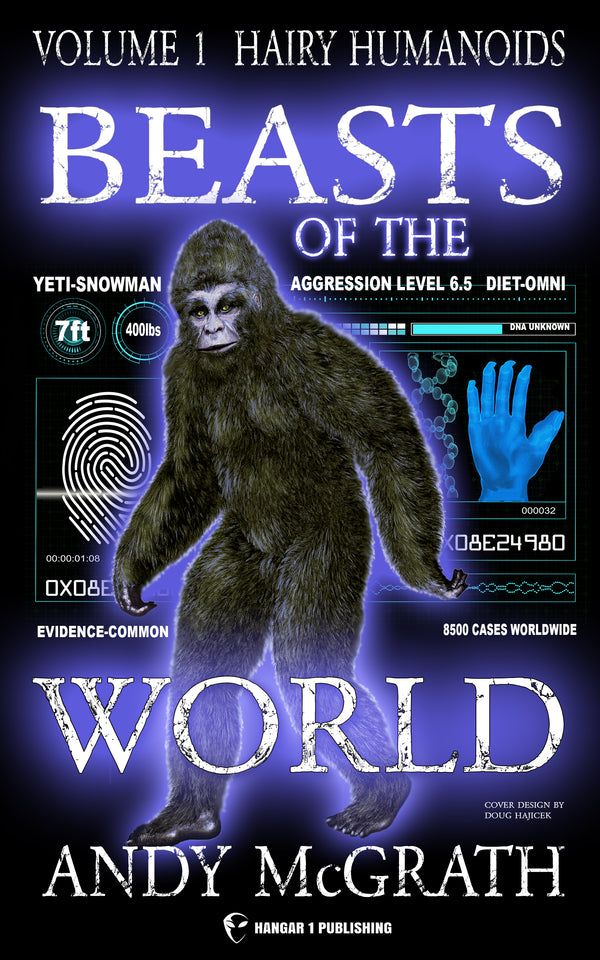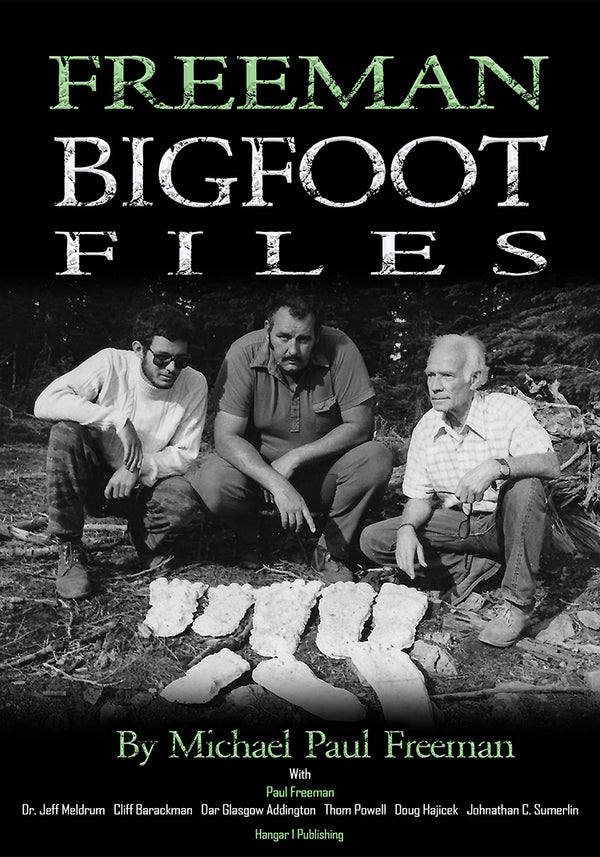Rhode Island Bigfoot Sightings

By Oliver Bennett, Cryptozoologist
In the realm of cryptozoology, few creatures have captured the imagination and sparked debate quite like Bigfoot. This elusive, ape-like being, said to roam the forests of North America, has been the subject of countless stories, investigations, and even hoaxes. While the Pacific Northwest is often considered the epicenter of Bigfoot activity, one state on the opposite coast has quietly emerged as a hotspot for sightings: Rhode Island. Affectionately nicknamed "Big Rhodey," this local variant of the legendary creature has left an indelible mark on the Ocean State's folklore and history.
As a researcher and historian with a keen interest in the unexplained, I have long been fascinated by the enduring mystery surrounding Bigfoot. The idea that an undiscovered primate could exist in our modern world, evading both capture and definitive proof, is as tantalizing as it is perplexing. When I first learned of Rhode Island's surprising connection to the Bigfoot phenomenon, I knew I had to delve deeper.
This article aims to provide a comprehensive look at the history and evidence of Bigfoot sightings in Rhode Island. By examining eyewitness accounts, investigating the work of dedicated researchers, and exploring the factors that may contribute to the creature's presence in the state, I hope to shed light on this intriguing mystery. Join me as we embark on a journey to uncover the truth behind "Big Rhodey" and the enduring allure of Bigfoot in the Ocean State.
The Earliest Known Bigfoot Sighting in Rhode Island
The history of Bigfoot sightings in Rhode Island stretches back centuries, with the earliest known account dating to 1765. This remarkable encounter, which predates many of the more famous Bigfoot stories from other parts of the United States, occurred in the Great Barrington area, a region that extends into present-day Rhode Island.
According to the account, a group of explorers stumbled upon a sleeping creature that bore a striking resemblance to what we now know as Bigfoot. The explorers' description of the creature, though lacking in modern scientific detail, paints a picture of a large, hairy, humanoid figure. This early sighting is significant not only because of its age but also because it suggests that the presence of Bigfoot-like creatures in the region may have a much longer history than previously thought.
The Great Barrington encounter raises intriguing questions about the origins and distribution of Bigfoot. Could this sighting indicate that the creature has been a part of the region's ecosystem for centuries, perhaps even longer? Or does it suggest that Bigfoot may have migrated to the area at some point in the distant past? While we may never know the answers to these questions with certainty, the 1765 account serves as a tantalizing starting point for our exploration of Rhode Island's Bigfoot mystery.
Notable Bigfoot Sightings in Rhode Island
The 1983 Washington Encounter
One of the most well-known Bigfoot encounters in Rhode Island occurred in the town of Washington in 1983. The incident began innocently enough, with four friends enjoying a cookout near the abandoned Camp Eagle. As the night wore on, strange rustlings in the distance caught their attention. Curious and perhaps a bit apprehensive, two of the young men, Eric Durant and Frederick Parody, decided to investigate.
What they encountered next would forever change their lives. As they made their way down a moonlit trail, they came face to face with a massive, hairy, bipedal creature. Durant later described the creature to the Berkshire Eagle as standing "on two legs, silhouetted on the trail in the moonlight, and it was huge." The creature, estimated to be between six and seven feet tall, was covered in dark brown fur and had eyes that seemed to glow in the darkness.
Frozen in fear, Durant and Parody watched as the creature stood motionless for a moment before disappearing into the woods. The two men quickly retreated to their campsite, where they shared their terrifying experience with their friends. As if to confirm their story, the group spotted the creature once more as they drove away from the area, leaving them all shaken and forever changed by their brush with the unknown.
The 1994 October Mountain Hiker Sighting
Another notable Bigfoot sighting in Rhode Island occurred on October Mountain in 1994. A lone hiker, making his way along a well-traveled trail, spotted a reddish-brown creature crouched in the brush. Intrigued, the hiker raised his binoculars for a closer look, and what he saw defied explanation.
As the creature stood up, the hiker was struck by its human-like body, covered in fur and sporting long arms that reached down to its knees. The hiker watched in amazement as the creature moved through the undergrowth with an ease that suggested a deep familiarity with the terrain. After a few moments, the creature disappeared from view, leaving the hiker with a story he would never forget.
The October Mountain sighting is significant not only for its detailed description of the creature but also for its location. The Berkshires region, which extends into Rhode Island, has long been a hotspot for Bigfoot activity, with numerous sightings and encounters reported over the years. The 1994 incident adds to the growing body of evidence suggesting that the creature may have a particular affinity for this area.
Other Significant Sightings
In addition to the Washington and October Mountain encounters, Rhode Island has been home to a number of other significant Bigfoot sightings over the years. In 2002, a motorist in Glocester reported seeing a large, hairy creature crossing Route 6, while in 1998, a biker in Glendale claimed to have spotted a Bigfoot-like creature during the day.
These sightings, along with countless others, paint a picture of a creature that is both elusive and ubiquitous. From the dense forests of the north to the quiet back roads of the south, Bigfoot seems to have left its mark on every corner of the Ocean State. As we continue our investigation into the mystery of "Big Rhodey," these sightings serve as important pieces of the puzzle, each one bringing us closer to understanding the truth behind this enigmatic creature.
Investigating Bigfoot in Rhode Island
Carl Johnson and the Big Rhodey Research Project
No discussion of Bigfoot in Rhode Island would be complete without mentioning the work of Carl Johnson and the Big Rhodey Research Project. Johnson, a dedicated researcher with a background in paranormal investigations, has spent years combing the forests and swamps of Rhode Island in search of evidence of the creature's existence.
Through his tireless efforts, Johnson has amassed an impressive collection of data, including oversized footprints, unidentified hair samples, and eyewitness accounts from across the state. His work has helped to bring attention to the Bigfoot phenomenon in Rhode Island and has inspired others to join in the search for answers.
One of the most intriguing aspects of Johnson's research is his theory about the origins of Bigfoot in Rhode Island. He believes that the creature may be a type of feral human, a divergent strain of Homo sapiens that has adapted to life in the wilderness. This theory, known as atavism, suggests that Bigfoot may be a throwback to an earlier stage of human evolution, a relic of our distant past that has managed to survive in the remote corners of the world.
While Johnson's theory is certainly controversial, it highlights the many questions that still surround the Bigfoot mystery. Are these creatures truly a separate species, or are they somehow related to humans? What is their place in the natural world, and how have they managed to evade detection for so long? As we continue to explore the evidence and insights gathered by researchers like Johnson, we may slowly begin to unravel the secrets of "Big Rhodey" and the larger Bigfoot phenomenon.
The 2011 Exeter Video Footage
In 2011, a piece of evidence emerged that would reignite interest in the Bigfoot mystery in Rhode Island. Dina Palazini and Kris Stepney, two of Carl Johnson's colleagues, were conducting an investigation in the town of Exeter when they captured something extraordinary on film.
The video, though brief and admittedly blurry, shows a figure moving through the woods at a distance. Described as a brownish, hairy creature with a sloped forehead, the figure appears to walk upright, its gait suggesting a level of intelligence and purpose that sets it apart from the average woodland animal.
The Exeter footage quickly gained attention, both within the Bigfoot research community and among the general public. Some hailed it as the best evidence yet of the creature's existence in Rhode Island, while others remained skeptical, pointing to the video's poor quality and the possibility of misidentification or hoax.
Even the team from the popular television series "Finding Bigfoot," who investigated the sighting as part of an episode focused on Rhode Island, could not reach a definitive conclusion about the figure in the footage. While they acknowledged the intriguing nature of the video, they ultimately felt that more evidence was needed to confirm the presence of Bigfoot in the area.
Despite the ongoing debate surrounding the Exeter footage, its impact on the Bigfoot community in Rhode Island cannot be overstated. The video served as a catalyst for renewed interest and investigation into the creature's presence in the state, inspiring researchers and enthusiasts alike to redouble their efforts to uncover the truth behind "Big Rhodey."
The 2011 BFRO Town Hall Meeting in East Greenwich
The Bigfoot Field Researchers Organization (BFRO), one of the most well-known and respected groups dedicated to the study of Bigfoot, has long had an interest in the sightings and encounters reported in Rhode Island. In 2011, the organization decided to hold a town hall meeting in East Greenwich, inviting local residents to share their experiences and knowledge of the creature.
The meeting, which was well-attended by both Bigfoot enthusiasts and curious members of the public, provided a fascinating glimpse into the depth and breadth of the Bigfoot phenomenon in Rhode Island. Attendees shared stories of sightings and encounters, some dating back decades, while others brought forth new evidence and theories about the creature's presence in the state.
One of the most striking aspects of the meeting was the sheer variety of experiences reported by attendees. Some described brief, fleeting glimpses of a hairy, bipedal creature in the woods, while others recounted more prolonged encounters, complete with vocalizations and even physical evidence like footprints or hair samples. The stories, though varied in their details, all shared a common thread: a deep-seated belief in the existence of Bigfoot and a desire to understand its place in the natural world.
The BFRO's decision to hold a town hall meeting in Rhode Island is significant for several reasons. First, it demonstrates the organization's recognition of the state as an important location for Bigfoot research and investigation. Second, it highlights the growing interest and engagement of the local community in the Bigfoot phenomenon, as evidenced by the strong turnout and passionate participation of attendees.
Perhaps most importantly, the meeting served as a reminder that the search for Bigfoot is not just the domain of a handful of dedicated researchers and enthusiasts. Rather, it is a collective effort, one that draws on the knowledge, experiences, and insights of people from all walks of life. As we continue to explore the mystery of "Big Rhodey" and the larger Bigfoot phenomenon, events like the BFRO town hall meeting will undoubtedly play a crucial role in shaping our understanding and guiding our investigations.
Factors Contributing to Bigfoot Sightings in Rhode Island
Diverse and Undisturbed Natural Landscapes
One of the most compelling factors that may contribute to the presence of Bigfoot in Rhode Island is the state's diverse and largely undisturbed natural landscapes. From the dense forests of the north to the sprawling swamps and wetlands of the south, Rhode Island boasts a wide range of habitats that could potentially support a creature like Bigfoot.
In particular, the vast tracts of forest found in the northern and western regions of the state have long been considered prime locations for Bigfoot activity. These areas, which include places like the Arcadia Management Area and the George Washington Management Area, are characterized by dense stands of trees, rugged terrain, and limited human development. Such conditions could provide an ideal environment for a large, elusive primate like Bigfoot, offering both shelter and sustenance away from the prying eyes of humans.
The importance of undisturbed habitat in the search for Bigfoot cannot be overstated. As human development continues to encroach on wild spaces around the world, the areas where a creature like Bigfoot could potentially thrive become increasingly rare and fragmented. Rhode Island's remaining wilderness areas, though small in comparison to the vast expanses found in other parts of the country, may represent a vital refuge for this enigmatic creature.
Of course, the presence of suitable habitat alone does not guarantee the existence of Bigfoot in Rhode Island. However, when combined with the state's long history of sightings and encounters, as well as the growing body of evidence gathered by researchers and enthusiasts, the idea that "Big Rhodey" could be out there somewhere in the Ocean State's forests and swamps becomes increasingly plausible.
Small Size and Dense Human Population
At first glance, Rhode Island's small size and dense human population might seem like factors that would work against the presence of Bigfoot in the state. After all, how could a creature as large and elusive as Bigfoot manage to evade detection in an area where human development and activity are so prevalent?
However, upon closer examination, these very factors may actually contribute to the frequency of Bigfoot sightings in Rhode Island. The state's compact geography and high population density mean that humans and wildlife are often forced into closer proximity than they might be in larger, more sparsely populated areas. This increased contact between humans and the natural world could potentially lead to more frequent encounters with creatures like Bigfoot, as they are forced to navigate an increasingly complex and fragmented landscape.
Moreover, the challenges of remaining undetected in a state like Rhode Island could potentially drive a creature like Bigfoot to adopt more nocturnal and secretive habits, making it even more difficult for humans to catch a glimpse of this elusive being. The fact that many Bigfoot sightings in Rhode Island occur at night or in remote, heavily wooded areas suggests that the creature may have adapted to the pressures of living in close proximity to humans by becoming even more adept at avoiding detection.
Of course, the idea that Bigfoot could thrive in a state as densely populated as Rhode Island is not without its challenges. The creature would need to be incredibly intelligent and resourceful to navigate the complex web of human activity and development that characterizes much of the state. Additionally, the limited size of Rhode Island's wilderness areas would make it difficult for a breeding population of Bigfoot to maintain genetic diversity over time.
Despite these challenges, the fact remains that Rhode Island continues to be a hotspot for Bigfoot sightings and encounters. As we continue to explore the factors that may contribute to the creature's presence in the state, it is important to keep an open mind and consider the ways in which even seemingly inhospitable environments can harbor surprising secrets and mysteries.
Rich History of Paranormal and Supernatural Activity
Rhode Island's long and storied history of paranormal and supernatural activity may also play a role in the prevalence of Bigfoot sightings in the state. From haunted mansions and ghostly graveyards to ancient Native American legends and tales of otherworldly creatures, the Ocean State has long been a magnet for those interested in the unexplained and the mysterious.
One of the most famous examples of Rhode Island's paranormal heritage is the alleged vampire grave of Mercy Lena Brown in Exeter. According to local legend, Brown, who died of tuberculosis in 1892, was suspected of being a vampire by her family and community.
From Bigfoot to UFOs: Hangar 1 Publishing Has You Covered!
Explore Untold Stories: Venture into the world of UFOs, cryptids, Bigfoot, and beyond. Every story is a journey into the extraordinary.
Immersive Book Technology: Experience real videos, sights, and sounds within our books. Its not just reading; its an adventure.


